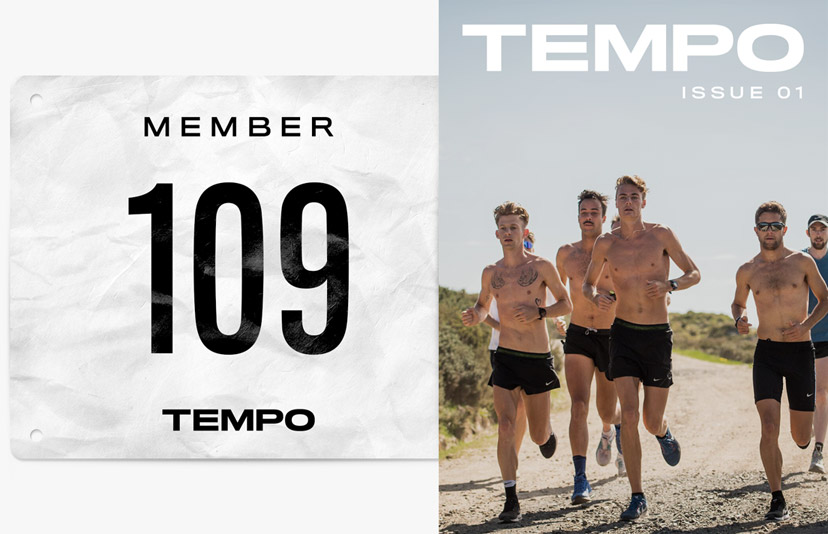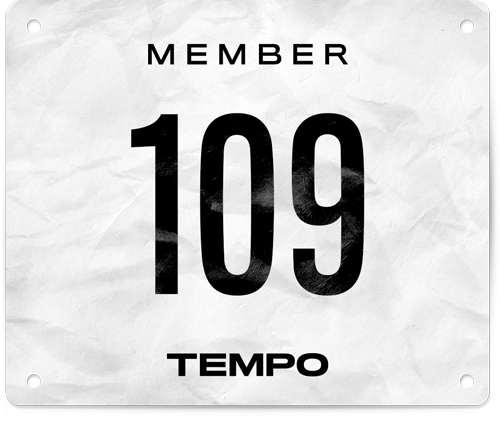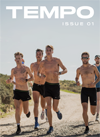Culture
The pulse of Africa: Part Two
Checking out the town where royalty trains, and experiencing the Great Ethiopian Run
Editor's Note: I was fortunate to travel to Ethiopia in November 2018 to run and explore a country that I didn't previously know much about. You can read Part One of my trip account here, or settle in and enjoy Part Two below.
STOP THREE: SULULTA (2,550M ABOVE SEA LEVEL)
If Bekoji is where the young Ethiopian running talent in fostered, Sululta is where the Kings and Queens reside. The town will forever be linked to Haile Gebrselassie after he built his first resort here (the still impressive Yaya Village - the only option for most travelling athletes, including Sir Mo Farah), and more recently Kenenisa Bekele built one of the best tracks in all of Ethiopia in the area. On any given day you can see Diamond League winners and World Champions training in Sululta.
Arriving at Yaya Village, we're greeted by a narrow 400m dirt track as soon as we enter the hotel grounds. Most days this track rarely hosts more than a handful of tourists, though it is nice to let the mind wander with thoughts that maybe Mo has cut some laps here on his visits.
Our first run in Sululta is a long run out through the forest and the fields to Satellite Park. It’s about a 13 km loop on varied terrain that has us zig-zagging around trees and cutting through back alleys before popping out in a lush green field.
As we dart around the trees, Brian calls out to me, “now Riley, this next landscape can be a bit confronting, there’s a lot of trash on the ground”. Sure enough, as we exit the treeline and come to a clearing, there is garbage strewn through the field as far as you can see. It’s disheartening, and the first reaction is disappointment that the residents of Sululta could treat their home this way. It’s a situation we bring up with countless locals over the next week, and we’re informed of the lack of funding for sanitation works, and the lack of education around the impact this has on the environment. It’s sad, and it’s another reminder of just how poor Ethiopia still is.
The next day, we’re off to meet with Coach Ayu, a local personality who oversees the development of the largest training group in the area. It’s threshold day, and after a 20 minute warm up the group splits into 3 or 4 pace groups for the workout. They run on a worn, makeshift dirt track, equivalent to around half the size of a soccer pitch. For around 40 minutes they run in tight packs, sometimes coming from both directions. The only two sounds I hear in that 40 minutes are the sporadic blow of a whistle, and the thunderous foot fall of a group of athletes running at pace. Today is Wednesday, and in just a few days time some of these athletes will be running in the elite field at the Great Ethiopian Run; Africa’s largest 10k race. Despite their position in the elite field, many of these runners have no sponsorship, no support, and will race in simple cotton t-shirts. Anywhere else in the world they would be winning local city races every week.
Around us, Tirunesh and Genzebe Dibaba do their long run, disappearing from view only to appear on another side of the field a few minutes later. Genzebe has parked her Escalade nearby; surely one of only a handful of these vehicles in the country (I would guess the only one, but the US Embassy in Addis is gigantic). The contrast between those who have made it and those who haven’t is stark.
After the workout, the mood has lifted noticeably from when we first arrived. There is laughter, and there are people piling into the back of cars, some headed home to sleep, and others headed to school.
We wait by the roadside and try to get a lift back to Yaya Village. Buses here are minivans with a person:seat ratio of at least 2:1, but sometimes 3 or 4:1, and a guy hanging out the front passenger window collecting your fare as you board. I’ve been on the train at Shinjuku Station (the world’s busiest train station) at peak hour, I’ve been in tuk-tuk’s so overcrowded one of the wheels got off the ground around a bend, and I’ve copped standing room only on a bus in Shanghai, but I’ve never had less personal space than inside that minivan. Was it an issue? Not really. Do I understand how we managed to get the bus to stop at the right place? No. Would I feel confident figuring it out again? Absolutely not.
The next morning is our first opportunity to visit Kenenisa’s track, less than 1 mile from Yaya Village. I’ve been waiting for this opportunity; I don’t feel like I’ve had a single stride in Ethiopia where I wasn’t thinking about my landing or footfall, careful to not roll an ankle on the uneven ground. Indeed it’s this that contributes to the incredible foot strength of Ethiopian athletes, but for me it’s just another thing to think about. So as we set off on foot to the track, I’m keen to get a run of my own in after I shoot some local athletes.
We arrive at the gates to the track, only it's impossible to tell from here that there is a track. It’s just a dirt driveway with a tall and crumbling fence. Curiously, the man who issues your entry ticket (a couple of USD), carries with him a machine gun. Running is serious here, or so it seems.
A few hundred metres inside the gates we get to the end of the driveway and see a hive of activity at the track. Either on the track or on the outskirts would be at least 150 runners, from sprinters to middle distance, and all age ranges. As some groups do their warm up jog in the dirt outside the track, groups of young girls and boys complete their efforts on the track.
I’m struck by two things. First, this is a place to come and work. No one is here to socialise, no one is laughing and having a good time, and there are certainly no selfies (and yes, the locals do have camera phones). The second thing that I notice is how the different groups share the track so effectively. As a group of girls no older than 15 complete a 400m rep on the inside lanes, a group of grown men rip past them on the outside on their 200m rep. There’s no complaining, no shouting, no gesticulating to move. During recoveries they’ll even nod or slap hands with each other. I think the most fun anyone has all morning is when they catch me, token white guy with tattoos, doing my own solo workout under the watchful eye of Coach Ayu. Some clap, some cheer, all smile. As I pull alongside one group on a recovery, I turn to an athlete on my left, who is wearing a 2017 elite singlet. “Nice kit, mate” I say to him, to which he replies “Diamond League” and before I register the response, he and his training partners are gone. I’ll see them again almost immediately as they lap me on the outside.
We finish our workouts, slap hands with a few other runners, and then head back to Yaya. As we are leaving the track, two buses pull in. A women’s football game is about to take place on the infield.
On the road side, a number of runners are waiting for buses to take them back to their towns. Many of them are pace guides, making a meagre living by taking tourists running, or helping get them through workouts.
Our remaining days in Sululta are spent following a similar pattern. Running in Satellite Park in the morning, and getting back to Yaya too late for breakfast. We settle for Ethiopian coffee, and wait for injera for lunch. Many African athletes are staying at Yaya this week ahead of the Great Ethiopian Run, where some experts are predicting Brian could claim the illustrious title of ‘first foreigner’.
We head back down the mountain to Addis on Saturday evening, the drive is too long to try and make on race day. On our way to our new accommodation, we stop in at the home of our driver, Sammi. His mother insists we have coffee, so we sit in their lounge and enjoy multiple cups late into the night.
STOP FOUR: ADDIS ABABA (2,355M ABOVE SEA LEVEL)
There’s a lot of local hype about the Great Ethiopian Run. Much has been made of the effort from the Ethiopian Government to welcome athletes from other African nations, along with 2018 ambassadors Zerseney Tadese and Stephen Kiprotich. The winning times are impressive to say the least, with the first male getting home in 28:54.3, and the first female in 33:43.5 - which sounds just OK, until you consider the altitude and air quality. Aside from the elite race, it’s a national event, with around 44,000 locals getting in on the action. It would be fair to say racing isn’t at the front of people’s minds; it’s basically a 10 kilometre party complete with drums, makeshift floats, and all manner of costumes.
Standing around the elite marshalling area before the race, I catch sight of Haile Gebrselassie, furiously working the two phones in his hand, looking suave as ever in his Ethiopia tracksuit. With just minutes until the race starts, he can still be seen pacing along the start line, directing authorities to where he wants them. The great man still commands a lot of respect in Addis.
After trying to shoot the start of the elite races, I make my way back towards the crowds to catch the start of the ‘fun run’. Wearing my media vest and picking a spot on a median strip, I figure I’ll be out of harm’s way. I learn very quickly that will not be the case. At several points I’m basically picked up and carried along like a beachball, seemingly bouncing from one group to the next. No one’s running, but at this stage running seems like a lot less fun.
Finally, after the elites have finished and cooled down, I see the first of the amateur runners storming home around 35 minutes. Sure enough, around 10th across the line is Brian, first foreigner by around 2 minutes. Brian, who has competed at national level events in the past, rolled in for a time of 37:30 - an effort level he said felt like a 31 flat.
After the run we walk the streets, enjoying some roadside samosa (I thought it may have been a risky food choice, turned out to be completely fine) and a smoothie. People still streaming by, their faces painted, their legs surely tired from all that dancing. Tomorrow, many of these people will go back to terribly poor conditions, and I’ll be on a plane back to Melbourne, Australia. But for this one day, through a connection to the sport of running, we’re having the time of our lives.


